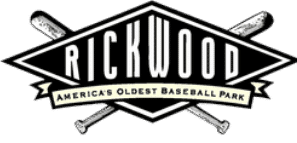See the notice for upcoming dates that Rickwood Field will be closed.
THE RICKWOOD LIBRARY: Fame and Fortune in The Show
December 2020
Jeb Stewart
Great books often inspire sequels. For whatever reason, it is exceedingly rare for any sequel to live up to the billing of the original. However, Art Black’s Fame and Fortune in The Show: Baseball at Rickwood Field and Beyond in the Middle 1900s is the perfect follow up to Showdown at Rickwood: Ray Caldwell, Dizzy Dean, and the Early Years of America’s Oldest Ball Park.
Once again, Black transports the reader to Birmingham’s past, this time in the mid-1930s. He expertly weaves the story of the city, the nation, and the world, against the backdrop of baseball at Rickwood Field. Walter, a character who we met as a boy in Showdown, is now a newspaper reporter, who Black assigns the job of documenting all the details. Birmingham and the nation slowly move out of the Great Depression and begin rapidly hurtling toward the Second World War. After so much glory in the late 1920s through 1931, the Barons became a second-division club in the Southern Association for the rest of the decade. Owner A.H. “Rick” Woodward installed lights at Rickwood Field in 1936, which served as a reprieve in terms of his enjoyment of the game; however, he finally sold the club to the Cincinnati Reds in 1938.
 By the mid-1940s, restauranteur Gus Jebeles purchased the Barons. Before the 1947 season, Jebeles made the most important decision in his tenure as owner. He hired Eddie Glennon to serve as the Barons general manager. Glennon had grown up in Philadelphia and his father was good friends with Athletics’ owner Connie Mack. Glennon was the A’s batboy in 1909 and became Mack’s protege. Mack had helped Rick Woodward design Rickwood Field in 1910, and now Glennon created the blueprint for the franchise’s success. As the Barons GM, Glennon proved to be the energetic answer to the team’s problems and his story becomes the central narrative of Fame and Fortune. Glennon brought radio broadcasts of the games back to Birmingham’s airwaves, renovated the ballpark, and his team set an attendance record at Rickwood in 1948 as an incredible 445,926 fans attended games. The indefatigable Glennon served as GM for 15 years, twice being named minor league executive of the year, as the Barons won Southern Association pennants in 1958 and 1959, SA playoff titles in 1948, 1951, and 1958, and Dixie Series championships in 1948, 1951, and 1958.
By the mid-1940s, restauranteur Gus Jebeles purchased the Barons. Before the 1947 season, Jebeles made the most important decision in his tenure as owner. He hired Eddie Glennon to serve as the Barons general manager. Glennon had grown up in Philadelphia and his father was good friends with Athletics’ owner Connie Mack. Glennon was the A’s batboy in 1909 and became Mack’s protege. Mack had helped Rick Woodward design Rickwood Field in 1910, and now Glennon created the blueprint for the franchise’s success. As the Barons GM, Glennon proved to be the energetic answer to the team’s problems and his story becomes the central narrative of Fame and Fortune. Glennon brought radio broadcasts of the games back to Birmingham’s airwaves, renovated the ballpark, and his team set an attendance record at Rickwood in 1948 as an incredible 445,926 fans attended games. The indefatigable Glennon served as GM for 15 years, twice being named minor league executive of the year, as the Barons won Southern Association pennants in 1958 and 1959, SA playoff titles in 1948, 1951, and 1958, and Dixie Series championships in 1948, 1951, and 1958.
Black tells the story of Glennon’s years as GM of the Barons through the players’ eyes as he crafts thorough biographies of power hitters Walt Dropo, Gus Triandos, and Norm Zauchin, colorful journeyman hurler Bobo Newsom, the troubled Jimmy Piersall, and popular Joe Grzenda. The big-hearted Glennon finally left Birmingham after the Southern Association collapsed in 1961. Rickwood sat empty for two years. However, the Barons were soon reborn as a new member of the integrated Southern League in 1964, and Black retells the exciting pennant race that season at the end of the book. For his part, Eddie Glennon worked as a sales manager for the Atlanta Braves before dying suddenly in 1968 at the age of 67.
Black also recalls the glory of the Birmingham Black Barons, who dominated the Negro American League during the 1940s winning pennants in 1943, 1944, and 1948. Unfortunately, the Black Barons lost to the Homestead Grays in the Negro League World Series in each of those seasons. However, Black’s tireless research uncovers interesting new information about Piper Davis, Artie Wilson, and Willie Mays, as well as legendary Satchel Paige, who played for the Black Barons in the late 1920s.
Fame and Fortune is a triple play. The book is wonderfully researched, well-written, and Black is an excellent storyteller. Hopefully, Black is planning to make the series into a trilogy.
